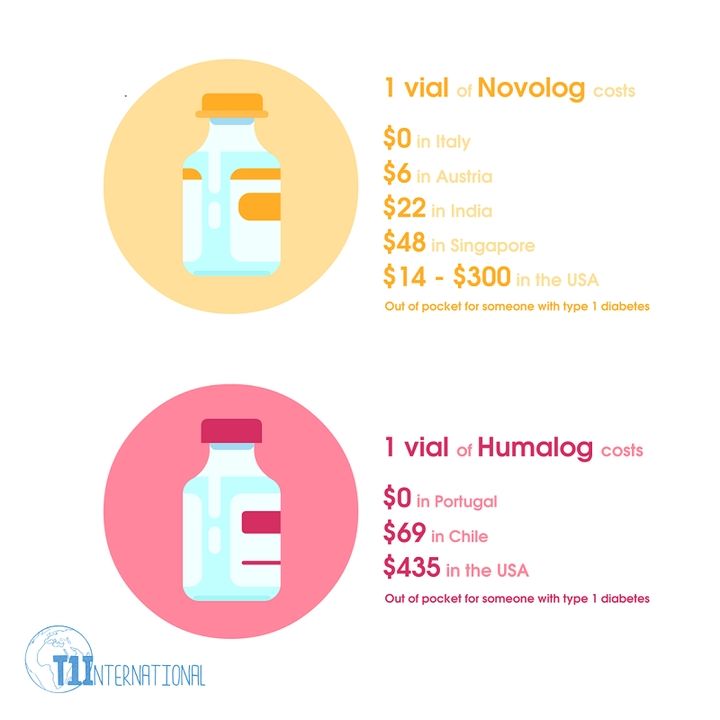A few weeks ago, I went to an event in the Diabetes Ireland care centre in Dublin. It was the launch of their 50th year anniversary, which I wrote about here. Chairperson, Hilary Hoey mentioned that the first Annual General Meeting took place on April 2nd in 1967 and it was there that the committee declared their first mission was to make insulin free to people with diabetes.
Two months later it was!
And in 1971, all other diabetes supplies were included on the newly launched government sponsored Long Term Illness scheme, which every person living with diabetes avails of today.
Hilary also said that people with diabetes were the first group of patients in Ireland to come together and take control of what they needed to manage their health.
I will never take this for granted! But I can’t stop thinking about all the people with diabetes in the world who still don’t have access to the basics of insulin and test strips. Even those, living in the richest nation of the world, are struggling to pay for their insulin. The only way I know how to help is to blog about it and stand in solidarity with my fellow people with diabetes around the world.
I’ve been thinking a lot about where the journey of insulin began, how it got here and how we might help improve access for ALL.
Over the Christmas holidays, I read the book BREAKTHROUGH: Elizabeth Hughes, the Discovery of Insulin, and the Making of a Medical Miracle. I found it fascinating; I couldn’t put it down.
The book begins its story in 1919 with how the idea of reproducing insulin came about and follows all the key players; Frederick Banting, Charles Best, Eli Lilly and Company and Mr. and Mrs. Charles Evans Hughes, one of the city’s most highly respected and recognizable citizens, and their daughter, Elizabeth, who was one of the first patients to receive insulin.
Back in 1922, those who were treated first were the patients who could afford to send their children to places like the Joslin Diabetes Centre. Those who survived long enough to be treated were those who could afford to send their children to specialised hospitals. It would seem that the world hasn’t changed all that much between the haves and the have nots in one hundred years.
Renza from Diabetogenic talks in her post a few weeks back about being conflicted between her excitement about new technologies in diabetes treatment and how most people in the world won’t have access to them.
It’s odd to think about how the world has changed and how it hasn’t.
Yes, in those 95 years since insulin was first manufactured, the majority of the world's population of people with diabetes do have access to insulin. We are grateful BUT we should never forget about those who do not have access. We need to fight for them. They need us to help them fight for them. Let’s try to remember that!
We can do so by supporting organisations such as;
- International Diabetes Federation's (IDF) Life for a Child Program
- Sign T1 International's Type 1 Diabetes Access Charter
- Donate any unwanted, in-date insulin in your fridge to UK organisation; InDependent Diabetes Trust (IDDT) who are part of the Insulin for Life Program
- Support JDRF's #Coverage2Control which calls on US health insurers to provide three things for people with T1D to help them control their disease, including: 1) keeping out-of-pocket costs for insulin and diabetes management tools predictable and reasonable, 2) giving people the freedom to choose the insulin pump that’s right for them; and 3) covering all life-saving technology, including artificial pancreas systems.
 From the book jacket of BREAKTHROUGH: Elizabeth Hughes, the Discovery of Insulin, and the Making of a Medical Miracle (St. Martin’s Press: September 2010: hardcover) by Thea Cooper and Arthur Ainsberg.
From the book jacket of BREAKTHROUGH: Elizabeth Hughes, the Discovery of Insulin, and the Making of a Medical Miracle (St. Martin’s Press: September 2010: hardcover) by Thea Cooper and Arthur Ainsberg.
1922: The first patient, Leonard Thompson a 14 year old boy with type 1 diabetes is given the first medical administration of insulin. Previously patients with type 1 diabetes would be put nto starvation diets and would have only months to live. Leonard lived another 13 years before succumbing to pneumonia.
1922: As news of insulin’s success spread, Banting and Best begin receiving letters asking for help for others with type 1 diabetes. Banting and Best improve their techniques for the production of insulin and Eli Lilly becomes the first insulin manufacturer.
“In 1918 Elizabeth Hughes stands in the kitchen of her family’s elegant townhouse in New York City, fiercely gulping water from a glass. She is the daughter of Charles Evans Hughes, one of the city’s most highly respected and recognizable citizens. Although Elizabeth doesn’t yet know it, she has what was then an unerringly fatal disease – juvenile diabetes mellitus. In a few short months, what had been a happy, active childhood will be eclipsed by the mounting symptoms of ravenous hunger and insatiable thirst.
In Toronto, a surgeon named Frederick Banting and a student named Charles Best succeed in purifying insulin from animal pancreases. Within months this miracle is nearly derailed by scientific jealousy, intense business competition, and at least one fistfight. In a race against time and a ravaging disease, Elizabeth becomes one of the first diabetics to receive insulin injections. As less fortunate children die, the discoverers work with a little-known pharmaceutical company named Eli Lilly and Company to make insulin available.”
